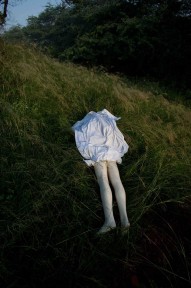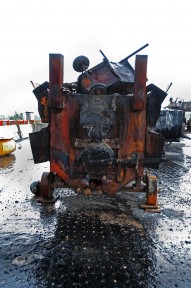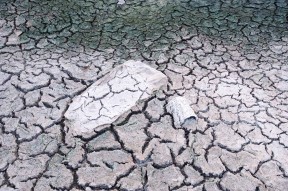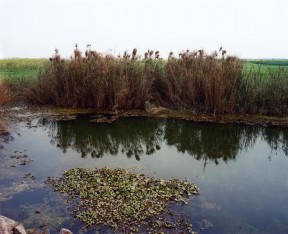For someone who graduated as a communications engineer and then followed it up with a management degree from FMS, Delhi, a career in the corporate world would be a natural choice. But not for Ravi Agarwal who, despite being “an academic achiever”, chucked it all to pursue photography. It was an engagement he had discovered long ago when he was gifted his first camera at the age of 13.
Now, an acclaimed award-winning photographer and environmental activist (in mid-90s, he set up Toxics Link that takes up issues of ecology and waste globally), Agarwal, 52, is all set to co-curate a twin city public art project to be held in Delhi and Hamburg simultaneously in November this year. Based on the idea of ‘the river’ – The Elbe in Hamburg and the Yamuna in Delhi – the Hamburg edition will include Agarwal’s photographs apart from work by other Indian artists. In Delhi, conceptualised to coincide with the Germany in India Year and to celebrate Hamburg being voted the Green Capital of Europe for 2011, the show will also have installations and performance art by artists from both countries.
 This is not the first time that Agarwal has received international acclaim nor is it the first time he laments the state of his beloved Yamuna. He was invited to the largest and most prestigious art show in theworld, Documenta 11 in Kassel, Germany in 2002, a rare distinction shared onlyby few other artists from India. “There is no breathing space left around me anymore. Everything is fluid and in a flux. The city is in transition and I seek spaces for keepingmyself intact, which is what my work has always been about. At one time, for instance, one could see a coin thrown into the Yamuna, now that is impossible.”
This is not the first time that Agarwal has received international acclaim nor is it the first time he laments the state of his beloved Yamuna. He was invited to the largest and most prestigious art show in theworld, Documenta 11 in Kassel, Germany in 2002, a rare distinction shared onlyby few other artists from India. “There is no breathing space left around me anymore. Everything is fluid and in a flux. The city is in transition and I seek spaces for keepingmyself intact, which is what my work has always been about. At one time, for instance, one could see a coin thrown into the Yamuna, now that is impossible.”
The river Yamuna has, in fact, surfaced time and again in Agarwal’s work – whetheras part of a book titled Immersion Emergence or as an installation on the river bed for “Have you seen the flowers on the River?” project. In a recent show in Delhi titled Flux, he had shown photographs of a dried up river bed evocatively titled After The Flood.
“There is an aesthetic relationship with a photograph which occurs, at the momentof its making. The image is a moment which does not re-occur. It is not an imageof something that is on the outside, but is reflective of a relationship. Nothing is ever the same,and can never be revisited,” says Agarwal, whose first big break came when Dutchanthropologist Jan Breman offered him to collaborate on a coffee table book aboutmigrant labour. Published by Oxford University Press, the book launched Agarwal into the big league as he was soon to show these pictures not only in India but also atthe Labour Museum in Amsterdam.
“Breman touched base with me after he saw my first solo show at AIFACS thatwas about city streets,” recalls Agarwal, who has remained true to the ideas of self and space, ever since that first art outing in ’92.
Apart from the river, capturing a city in transition – through machines, flyovers,sewage ponds and forest spaces – has been the constant muse for the artist. He had recently shown a series of photographs titled ‘Tar Machines’ dealing withissues of labour and industrial machines. “Driving down a rainy morning, I saw these road laying machines near the old Indraprastha Power Station, they seemed to be alive in that light. I took these pictures then. And when I went back a day later, they were all gone,” says Agarwal, “I am only making sense of the world around me, my work is a very spontaneous reaction to what I see, both as an artist and as a citizen. Idiscover myself through my images.”
He has also, in the past, attracted attention for the abstraction he achieves in mundane, tangible subjects like sewage and forest cover. “For the Forest work, I made certain minimalistinterventions in the forest to reflect my sense of things. I used mannequins, toys or a mere doodle on the soil of a forest path,” he explains, adding that he wantsto suggest through these random objects an insignificant human existence amidst alarger world.
 Speaking of existence, Agarwal believes that most symbols of development – flyovers in his work for instance – are just notions. “These forms show to me that stabilityis just a thought, and capitalism portrayed through these mushrooming flyoverseverywhere, only provide a false sense of stability.”
Speaking of existence, Agarwal believes that most symbols of development – flyovers in his work for instance – are just notions. “These forms show to me that stabilityis just a thought, and capitalism portrayed through these mushrooming flyoverseverywhere, only provide a false sense of stability.”
As much as these photographs are Agarwal’s signature style that encompass ‘nature’, ‘work,’ ‘labour’ and the ‘street’, his persona extends far beyonda being a full-time photographer. He set up the NGO Toxics Link, when on one ofhis regular bird-watching sprees with children at Delhi Ridge, he realised the Ridgewould be lost forever if it was handed over to DDA as a newly passed law said. “We fought a three-year long campaign against DDA to win it finally and that is whenToxics Link took real shape,” he says.
Long drawn campaigns have never deterred Agarwal. He was one of the people who actively spoke against the Commonweath Village’s location on the river bed. It is this sense of connect with the river that once again will find him in a new role, that of a co-curator, as he now prepares to put together the November show!








A picture truly is worth a thousand words.